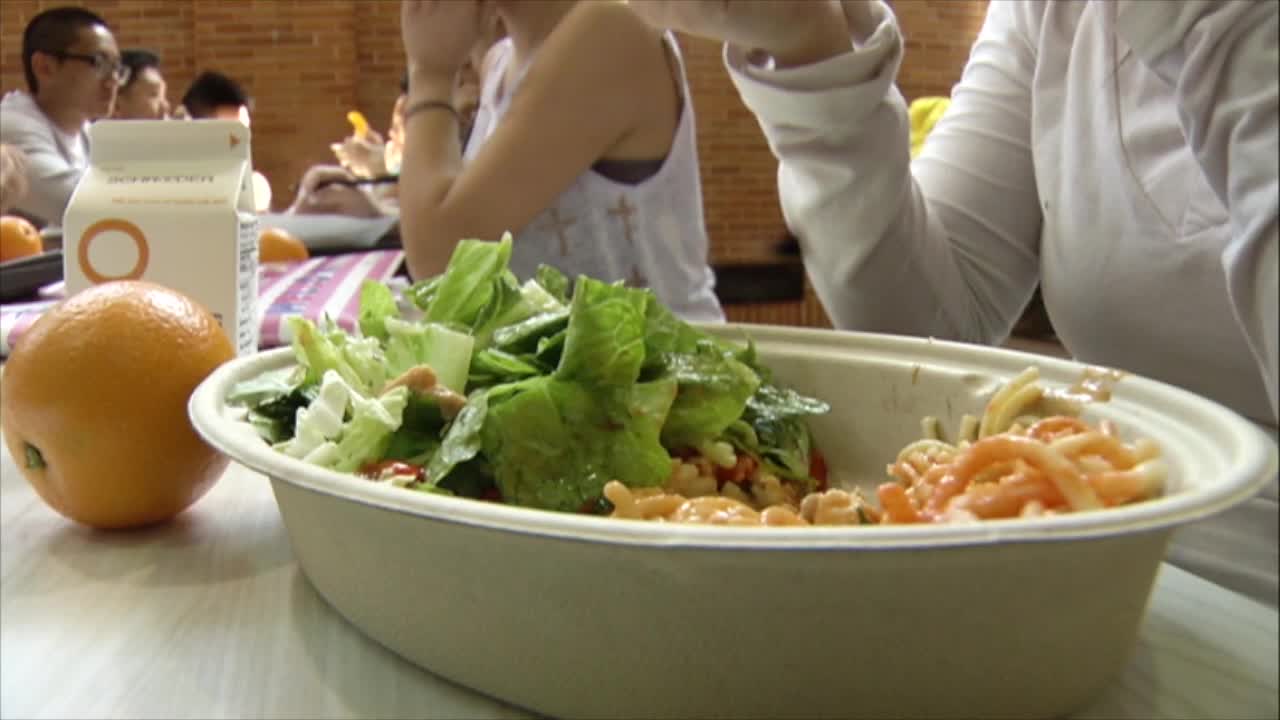Pilot program with USDA aims to provide free school meals to more students in Minnesota
[anvplayer video=”5130485″ station=”998122″]
The COVID-19 pandemic is not officially over, but the days of free school meals for all students are.
Amber Lightfeather of Duluth is among the parents worrying about what’s next for her four kids in public school.
“I don’t know what we’re going to do,” Lightfeather said. “It’s a nightmare wondering if I’m going to be able to pay for my kids’ school lunches.”
Federal waivers allowing schools to provide meals to all students at no cost during the height of the pandemic are expiring. Now, Minnesota is one of eight states participating in a pilot program with the U.S. Department of Agriculture to try to close the gap of students in need.
The program will certify children for free meals if their families are already receiving assistance through Medicaid— that means they will automatically be signed up with no additional paperwork.

(KSTP-TV)
Minnesota’s participation in the program is being welcomed by administrators of both Minneapolis and St. Paul Public Schools.
Stacy Koppen, SPPS Director of Nutrition Services, says the “direct certification” will streamline the process for some families.
“When you’re in this situation where you’re in need of help and services and you really don’t have someone there to help you navigate, this can really speed that process up, get access to the things that are really going to help your family and you child, quite frankly, succeed,” Koppen said.
State leaders estimate the pilot program will expand the availability of free meals to about 90,000 students on Medicaid who are not currently enrolled in free and reduced-price meal programs.
At St. Paul Public Schools, where 61.5% of the student body— 20,548 students, qualified for free meals last year, Koppen says it is still unclear how many additional students can be reached with assistance.
“We’re able to qualify these students in a much more streamlined fashion,” Koppen said. “But it doesn’t necessarily mean we’re going to have more students who qualify.”
The situation is similar in Minneapolis.
“While families continue to apply for educational benefits and we continue to receive direct certification data from the MN Department of Human Services, we do not have an accurate number of total qualifying students for this year yet,” a district spokesperson told 5 EYEWITNESS NEWS.
Both administrators and advocates urge families uncertain of their status to fill out an application for free and reduced-price meals.
In the past, Lightfeather says she and her husband earned just enough to leave her kids without the additional help they needed.
“If they raise that up it might get into where our threshold is,” Lightfeather said. “And even if it doesn’t help us, it’s going to help other people that I know are struggling.”